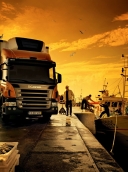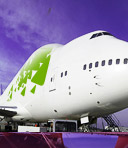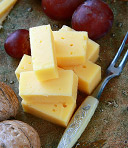
Our team has been working on a couple of interesting projects, where the shipments were made in product lots from different manufacturers. This means that we would like to share a few cases of cargo consolidation.
Before we dive in the details, we would like to explain which goals we try to achieve with the help of thoroughly planned models.
Consolidation of cargoes is an ideal solution when a constant necessity of shipments of sample products, clothing, accessories and stock supplies exists. Large retailers optimize their supply chain by consolidating products into one shipment. This mean of carriage is well suited for companies with a dynamic and diverse nomenclature of imports.
Most often it is seasonal clothing, accessories, souvenirs, electronics, small consumer appliances and other products produced abroad.
Often times this method of transportation is used at the peak or at the the end of the season when the stock is sold out but the demand still exists.
If you have first hand knowledge of the worries caused by changing forecasts this mean of transportation is for you.
You can order a lot of products in exactly the quantity that is needed. You will no longer have to wait for a lot large enough for a single container or truckload: your cargo will be traveling in the company of other products, while you will pay only for the weight and space that your cargo takes.
Tariffs for consolidations are calculated based on revenue freight, the rate that you pay will be multiplied by weight or volume whichever is greater.
For example, if your cargo weighs 2 tons but uses 1 cubic meter of space, then you will be charged by the weight, however light cargo will probably be charged by the volume it takes up.
Therefore, transportation of light cotton or lead as part of consolidated cargo is not cost effective, but on the other hand it is practical for neatly packaged goods with the volume/weight (also called stowage factor or sf) or weight/volume ratio from 0.7 to 1.3 and maximum weight of 10mt and volume of 10cbm.
Besides there are a few ways of delivery of small lots:
LCL – Less than Container Load
Shipment of cargoes in consolidated container. This allows shipment of small lots of products on regular basis without having to pay the freight for a full container. You pay only the portion that is taken up by your goods.

LCL-to-FCL
Supply chain looks as follows, a number of suppliers deliver their products to a CFS (container freight station) where all the products are safely packaged and loaded into a single container, that is then delivered to a CFS at the country of destination where it is further reconsolidated and the cargo is delivered to the receiver by truck.There exists another type of services, where importers agent arranges pickup of the cargo from the shippers warehouse for further stuffing into a container. In cases, where it is convenient pickup and stuffing can be done directly into ocean container.

LTL – Less Truck Load
Transportation of cargoes in a consolidated truck. This methods is similar to LCL, but instead of container the cargo is put into a truck trailer. This service is convenient for delivery of smalls lots without having to charter a full truck. You pay for the space that your cargo takes up. Where there is a small number of shippers, we can arrange direct pickup, otherwise it is more effective to arrange it via a warehouse.

LTL-to-FTL
Supply chain is similar to LCL-to-FCL - lots are assembled from different manufacturers in a warehouse and or the shippers deliver their lots to the terminal, where a load is formed and using international ground transportation the goods are delivered to the receiver.Using this services, we can arrange effective delivery of small parcels from a number of shippers in the same geographic region.
SEA+AIR
This mean of transportation combines the best in itself: the low cost of sea freight and quickness of air shipments. The service looks as follows: the shipper send the cargo to the nearest CFS where a container load is being assembled. The container is then shipped to a major air hub by an ocean carrier and the cargo is then reloaded from the ocean container into air container and flown to the destination.Transit time of around 18-25 depending on the location of the port, shipper and destination.
The cost of this services is typically higher than the standard LCL, however is significantly smaller than regular air freight.
This is most used for shipment of electronics, conveyor parts and spares, chemical industry (only non-hazardous goods), fashion, etc.

ROAD+AIR/AIR+ROAD
Combination of ground and air transportation provides the most coverage and quickest delivery time. Recently, this combination became wide spread in North America, EU and Australia.However, this service is also relevant for Russia. For instance, companies that are in the fast fashion industry. The shelfs of boutiques are changed weekly and it is hard to keep up the pace. Majority of purchasing is done in the regions where logistic channels are not fully operational and existing infrastructure is weak. At the same time mid size freight planes and various air companies just complicate the document exchange process.
This is when road+air comes into the game. With this service the entire shipment is flown, to let's say Domodedovo airport in Moscow, it is then further loaded onto trucks that deliver to the clients in different regions of Russia.
Tight time constrains and staightforwardness of this service justify the costs, this service is one of the most demanding. It requires a lot of attention and high level of professionalism of everyone involved in the project.

AIR
In essence it is consolidated cargo, it is typical small lots from tens of shippers are carried by air. This way when the whole production line is loaded it can take up the whole plane or several of the. These cases are dealt by air freight chartering, when one or several planes are chartered out for a certain volume.

One or a set of above mentioned methods of transportation can become a wonderful addition to your existing supply chain. It can allow for reduction of costs and as increase of product variety. You will become more flexible in terms of planning and will receive the necessary goods in optimum quantities at the right time.
Specialists from brox can analyze your existing supply chain and propose solutions that will increase the vitals of your business and minimize your worries.






